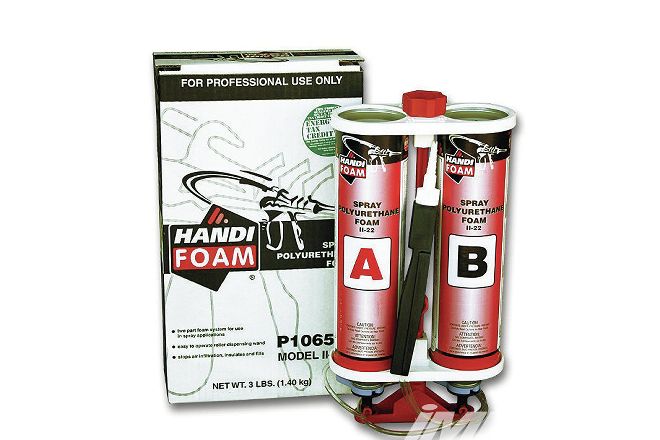Eric Hsu recently returned from the land Down Under, competing at Australia’s WTAC as engine manager for Sierra Sierra’s EVO. He’s enthusiastic (see photo), well . . . not really, but . . . he’s ready to answer your questions and picking his favorite tech questions for each installment of Question IT over the next few months.
 |
Chassis Stiffening - Question It
|
Chassis Stiffening - Question It
Got a good one? Send it to questionit@importtuner.com
Chassis Stiffening
My BNR32 GT-R just turned 20 this year. I have been accumulating parts over the last few years and am ready to begin a major build. The car is about to be stripped to the bare chassis, and I’m starting with new quarter-panels and all-new paint. Because of the age of the car, would it be beneficial to have the chassis fully stitch welded? It will primarily be a road car, but definitely see track usage as well. I didn’t want to take the path of putting a rollcage in the car (again, because it’s a road car) but I wanted to maintain or even restore the rigidity to the chassis, some of which I’m sure has been lost over its 20 years of life. I won’t waste your time telling you I’m “on a budget” and need “an easy fix” because that isn’t my issue. I’ve spoken to a reputable fabricator, one who I know has performed similar work on GT-Rs. I just want to know if this is a reasonable option, or if this is something that can be achieved with a quality set of under-chassis bracing.
-Justin Attanasio
Branchville, NJ
For a street car where chassis stiffness is not of paramount importance, a huge improvement in stiffness can be achieved by just using subframe connectors, strut tower braces, and inner fender braces. You could even take it a step further and use expanding stiffening foams that can be poured into your framerails, doorsill beams, and A-, B-, and C-pillars. Filling these areas with foam can be a messy and time-consuming job, but can also increase chassis stiffness to near rollcage levels when used in conjunction with braces and connectors. While foam is messy, it’s still probably an easier and less time-consuming task than stitch welding. Remember since welding generates extreme hot spots, wiring harnesses, carpets, sound deadening, and interior panels all need to be removed. Then, the paint and sealant needs to be scraped and sanded away before welding. After welding, the surfaces have to be painted to prevent corrosion. Overall, stitch welding is a major task better suited to a full effort race car build when a chassis is stripped to the bone. Stitch welding a chassis really just improves the strength of the seams where sheetmetal is joined. It does not really stiffen the sheetmetal itself, but the chassis will inadvertently get stiffer because the sheetmetal joints are reinforced. Foam injection, on the other hand, does stiffen the sheetmetal sections that it fills. The foam that I have experience with is called Handifoam II-22. You must pay careful attention to the instructions and spend some time sealing up holes, but filling these voids of your chassis with foam can make it much stiffer. I’ve used the foam on a BNR32 build myself, and I can tell you that it works extremely well when done correctly.
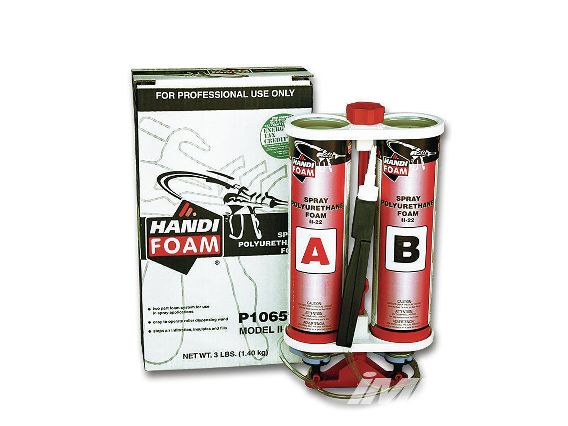 |
Chassis Stiffening - Question It
|
Chassis Stiffening - Question It
Electric 350Z?
I’m going against the grain here, but I’m thinking of swapping out my VQ35DE for something with a little less power and a lot more torque. I’ve envisioned a true Nissan EV for a long time now; plus, I don’t commute very far so range won’t be an issue. Not to mention, I’m pretty sure I’d be the owner of the only all-electric 350Z on the East Coast. That’s got to count for something right? Once I have the swap done I want to sell my engine and other useless ICE (in-car entertainment) parts to further develop the Z. What route should I take to do this? Should I go with forums or are there actual parts centers that would be willing to buy back slightly used parts.
-Henry
via importuner.com
Just buy a Nissan Leaf. Why spend a lot of money and end up with a crappier car? Nissan spent plenty of dime developing the Leaf, and it is a pretty damn good car. It is highly unlikely that you will be able to even come close to duplicating their results. Or you could buy a Leaf, tear the drivetrain, charging, and electrical system out of it, and transplant it into your 350Z . . . but oh what? That costs too much money? If you expect OEM-type reliability then that’s what you’ll need to spend because you’re not going to be able to do it any cheaper yourself. Believe me, save yourself a lot of heartache and money.
Valvetrain Myths
I own a ’98 Integra GSR and will soon install a set of camshafts, valvesprings, retainers, and adjustable cam gears. I was on a very popular Honda forum looking for information on what types of valvespring and retainer combos have been successful. I drive my car to and from home and work as well as autocross and HPDE events. One of the myths I came across is that titanium retainers wear out faster than steel. Another myth is that if you use OEM Honda retainers on aftermarket valvesprings they will have a longer life. Is there any truth to this? I’m looking for longevity and using proper parts for my daily and track car.
-Jamaul
Las Vegas, NV
Titanium does have poor wear resistance, but particularly when the surface of a titanium part comes into sliding contact with another metal. When this happens there is usually material transfer in the form of galling or fretting. In the case of a properly designed retainer, there really shouldn’t be any sliding contact. Sure, the titanium retainer comes into contact with the valvespring and valve locks (cotters), but this contact isn’t of the sliding variety when the retainer is properly designed. However, there is some normal wear that can come from spring rotation even when properly designed. When wear occurs from this over time, of course the titanium retainers should be replaced. This will take a considerable amount of time for this to occur in a street car, however.
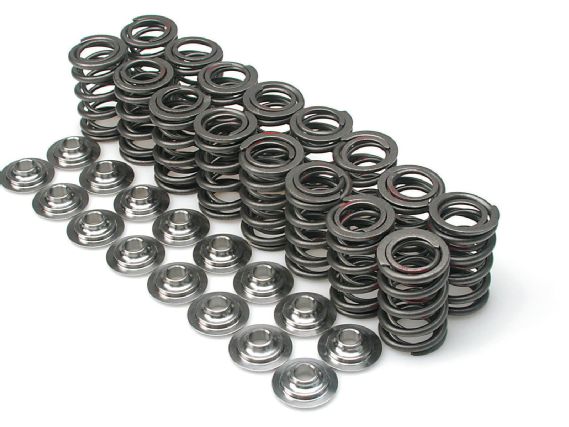 |
Chassis Stiffening - Question It
|
Chassis Stiffening - Question It
It’s important to remember that not all titanium retainers are created equal. There are different grades of titanium that will have different amounts of wear resistance. If you are looking for titanium retainers, I would recommend those made from Ti6AL4V or Ti-17. But honestly, for a street car, chances are your OEM Honda retainers with a good quality aftermarket valvespring will be plenty capable of handling what you throw at them. I don’t foresee a longevity issue with a properly designed retainer made out of a good titanium material, but if you want that extra peace of mind, OEM retainers should have greater wear resistance. No matter what you choose, be sure to stick to a well-known brand that is trusted among the Honda B-series community. Names that come to mind are Skunk2 or Eibach.
Old-School Swap
I am planning a project car for the near future using a Mitsubishi Starion, but the 2.5L turbo engine is rather outdated in terms of technology. I want to swap the 2.4L engine from an SRT4. The main concern with performing this swap is the mating of the new engine to the transmission. Are there any suggestions to make this a little less painful other than transplanting a 4G63? (I’m set on the SRT).
Thanks for your time,
-Sterling
Daytona Beach, FL
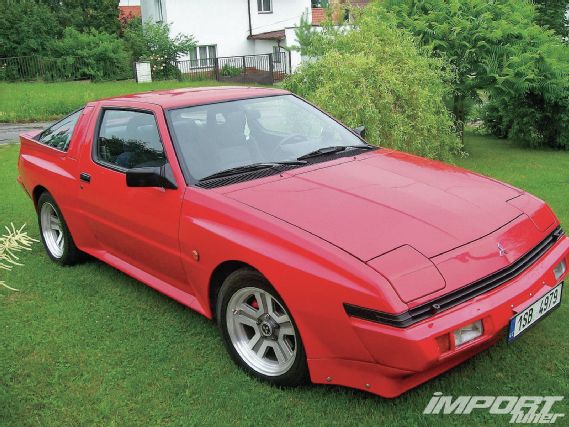 |
Chassis Stiffening - Question It
|
Chassis Stiffening - Question It
Before you pull that trigger, have you really thought of the 4G63? I cannot understand why people are always trying to reinvent the wheel. OK, let’s imagine you’ve spent $1K in parts and labor and two weeks straight making an SRT engine fit in the engine bay of a Starion. Now you still have to spend a ton of money on wiring, custom turbo, exhaust manifold, exhaust, ECU, and more, and there is no off-the-shelf or OEM rear-wheel-drive transmission option for the SRT engine. Does it really make you cooler than a guy with a 4G63 in his Starion? The 4G63 bolts in using two right-hand Starion engine mounts, a Mazda pickup bellhousing with an RX-7 five-speed transmission can be used, use the 4G63 harness and ECU, which already has massive aftermarket tuning support (or standalone ECU if you have the budget), and the various turbo and exhaust manifold options already exist for your RWD 4G63. How much easier can it be? Why make your life more difficult or spend more money than you have to? Screw the SRT engine.
Honda 101
I’ve been working on cars for all but 10 years now, and am sitting at a crossroad with my current build. I own a ’93 Civic coupe that I’m building an all-motor LS/VTEC. I plan on using 81.5mm Civic Type R pistons with a GSR cylinder head. The head will be worked over with a port and polish, which leads me to my dilemma. I’ve heard flat valves raise compression a little, but other than that is there any benefit to using them?
-Josh Zartman
That’s correct: Flat-head valves will raise your compression. That’s generally a good thing if you’re trying to get more compression. Flat valves also weigh more and can affect the maximum rpm of your valvetrain, but it’s unlikely that you’re at the very edge of your valvetrain’s capabilities (assuming you’ve upgraded your valve-springs). There’s no real black and white rule as far as the maximum compression ratio goes. There are many variables that can affect what your maximum compression ratio should be, such as quality of fuel, temperature, how well your exhaust and intake flows, quality of ECU and tuning, and more. I’ve generally kept normally aspirated street-driven B-series engines under a 12.5:1 compression ratio on pump fuel, but I’ve always used a good ECU (e.g. Hondata S300, A’pexi PowerFC, Motec, and others) to go with these engines. Keep in mind, a free flowing exhaust will also allow you to run higher compression on pump fuel. Also, cam timing is another big contributing factor. In general, you’ll probably get better results taking the car to have it professionally tuned on a chassis dyno since there are quite a few things that need to be addressed during tuning.
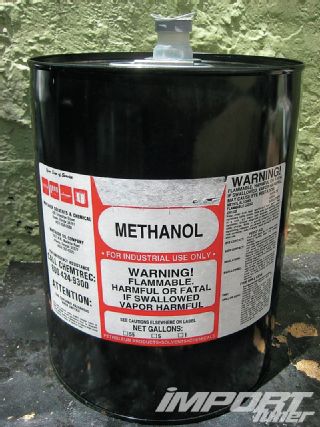 |
Chassis Stiffening - Question It
|
Chassis Stiffening - Question It
Meth Injection
For a while now I have been interested in water-methanol injection kits. With several brands claiming up to 200 degrees F lower cylinder temps, better fuel mileage, preventative detonation occurrence, and more horsepower. But if these kits have so many perks at a relatively low cost, why don’t you see water/meth kits on the list of upgrades on more of your feature cars or race cars?
My ultimate question is: With summer temps, would water-methanol injection be a viable upgrade to my motor right now, or when it’s built? Or is it not even worth it?
-Max
Puyallup, WA
Water injection systems can be beneficial for all turbo engines. The water mist is injected into the charge air stream (via intercooler tube), and the water mist absorbs the heat from the air resulting in cooler charge temps. The addition of methanol makes this benefit even greater because methanol’s latent heat of vaporization is even greater. You can inject 100 percent water, a 50/50 mix of methanol and water, or even 100 percent methanol. While this all sounds fine and dandy, in actuality, modern intake manifolds were never designed to distribute fluids or mists. For this reason it is best to keep an engine’s dependency on water/meth injection to an absolute minimum if using a single nozzle. Using one nozzle per cylinder can bring up the safety margin tremendously so if you must use meth/water injection, I suggest plumbing your system with a direct port setup if your budget allows. Personally, I never use water/meth injection because I believe it’s generally a Band-Aid for poor turbo sizing, lack of a good engine or engine parts, or lack of race fuel. A proper race car would never depend on water/meth injection either because water/meth can run out mid race. But I do admit that it is a cheap and effective way to make additional power on the street. The only thing that sucks is: What happens when you run out of water/meth? Your car’s horsepower becomes lame once again and you’re like an addict searching for more. Why not just get the proper parts that make more power?

